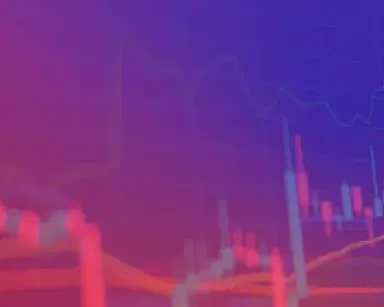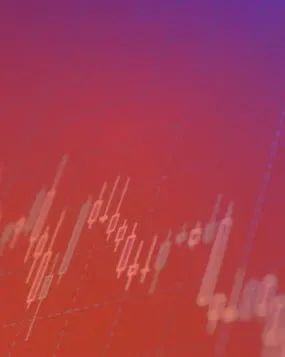- What is the difference between CFDs and options?
- What are CFD options?
- CFDs vs options vs futures
- CFDs vs swaps
- CFD FAQs
What is the difference between CFDs and options?
The key difference between CFDs and options is how each leveraged derivative works. Both take the form of contracts based on underlying financial markets, but whereas an option gives you the right to trade a market at a set price, in a CFD you agree to exchange a market’s price movements.
We’ll get into this in more detail later on, but for now here are a few other key differences between CFD and options trading:
- A CFD’s price will exactly track its underlying market, an option’s premium moves due to a number of factors
- CFDs are traded over the counter (OTC) with a trading provider, most options trade on exchanges
- Options give you the right to trade the underlying, with a CFD you never own the underlying
How CFDs work
CFDs work by enabling you to trade a huge number of markets without ever owning the underlying assets themselves. Instead, you trade a derivative called a contract for difference (CFD). CFDs mimic the price movements of their relevant market – an S&P 500 CFD follows the index very closely, a gold CFD follows the metal very closely.
Buying or selling a CFD works just like trading the market it represents. For example, buying 10 Tesla CFDs at $200 gives you the same exposure as buying 10 Tesla shares. If TSLA stock rises to $250, you’ll make a (10 * 50) $500 net profit – the same as if you’d bought the shares via a broker.
There are several reasons traders choose CFDs over traditional investing:
- You can trade lots of different markets. City Index Australia offers 6,300 CFD markets to choose from
- You can go short as well as long. If you think Tesla is in for tough times, you can sell the stock and profit from its fall – although you’ll earn a loss if it rises
- You’ll benefit from CFD leverage, meaning you don’t need a position’s full value in your account in order to trade
Learn more about how to trade CFDs.
How options work
Options work by giving you the right – but, crucially, not the obligation – to buy or sell a market at a fixed price known as the strike price before the option expires. To get this right, you’ll pay a premium when you purchase the option.
Say, for instance, that you buy an option to purchase 100oz of silver at $25. If silver rises to $30 before the option expires, you can buy it for a $5 discount – earning you a net profit of $500, minus the premium you paid. If silver stays below $25, you only lose the premium you paid to buy the option.
You don’t have to stick to buying options, either. You can sell them and pocket the premium. However, option sellers face unlimited losses if their market moves beyond the strike.
Learn more about options trading.
What are CFD options?
CFD options are a type of contract for difference that enable you to trade on options prices. As with any other type of CFD, you’re agreeing to exchange the difference in an asset’s price from when you open your position to when you close it – it’s just that here, the asset is an option.
You can choose the details of the option you’re trading, including when the option expires and its strike price. You then choose to buy the option if you think its premium will increase or sell it if you think it will fall in value.
There are lots of factors that impact an option’s premium. Learn more about option pricing.
Like traditional options, CFD options come in two main types: calls and puts.
CFD call options
CFD call options give the buyer the right to buy the underlying market, such as EUR/USD or the Australia 200 (ASX 200). In general, they’ll become more valuable as their underlying moves up, either towards or above the strike price.
If you sell a CFD call option, you’ll be hoping that the option premium falls, so you can close your position at a profit.
CFD put options
CFD put options are the opposite. They give the buyer the right to sell their underlying, and in general move up in value when the market moves down, towards or below the strike price.
If you sell a CFD put option, you’ll be hoping that the option premium rises, so you can close your position at a profit.
Start trading options CFDs
You can start trading options CFDs with City Index today by following these steps:
- Open your City Index Australia account, and add some funds
- Log in to our award-winning Web Trader platform, or download our mobile trading app
- Choose from options on key commodity, FX and index markets with daily, weekly or monthly expiries
- Open your position
CFDs vs options vs futures
CFDs and options can appear similar to futures at first: they’re all derivatives that enable you to take your position on a market’s price. However, in a futures trade you agree to trade a market at a set price on a set date in the future.
Unlike CFDs, there is a set date on which a futures trade is made, and a set price. Unlike options, you don’t get the right to trade a market when you buy a future – you are obligated to make the trade, unless you sell the contract on.
Learn more about futures trading.
CFDs vs swaps
CFDs are also often confused with swaps, another type of financial derivative. However, CFDs and swaps work differently – a CFD is a contract that essentially mimics a financial market, in a swap two parties agree to exchange the cash flows from an asset (typically an equity) for a set period of time.
While there are similarities between CFDs and swaps, they are intended for very different uses and are favoured by different types of traders.
CFDs vs options: which is better to trade?
CFDs and options can both offer some powerful trading techniques, but which is best for you? Take a look at our quick overview to see the benefits of each.
| Benefits of CFDs over options | |
|---|---|
| 1. They resemble the underlying market If you’re used to trading stocks, indices, FX or commodities, then trading CFDs on the same market may feel familiar. They have similar prices, and each CFD market is designed to resemble its underlying. Options are very different to their underlying market, with additional complexities over pricing and tricky options terminology to master. |
2. You can use stops and limits to control your risk CFDs come with additional tools for managing your risk, including stop losses that automatically close your position once it reaches a set level of loss defined by you. As CFDs are leveraged, these tools can be crucial to avoid losses. Most successful CFD traders know where they’re going to place their stop loss ahead of entering any opportunity. See how stops work in our CFD examples. |
| 3. You can trade 1,000s of markets from a single platform The range of markets you can trade with CFDs is vast, comprising of stocks, forex, indices, commodities, cryptos, bonds, interest rates and more. And as we’ve seen, you can even use CFDs to trade on options prices. With City Index, you can buy and sell more than 6,300 markets. You’ll also find options on a wide range of markets, but the choice isn’t as big as CFDs – typically covering indices, forex, commodities and some stocks. |
4. Less worry about expiries CFDs expire, but if you want you can choose to roll over your contract and keep the position open indefinitely. And the time to expiry has no impact on the price of a CFD, it will only follow the underlying market. Option expiries dictate whether you’ll make a profit or a loss on your position, so can be crucial. And all options suffer from time decay, meaning that they lose value as the expiry date nears. |
| Benefits of options over CFDs | |
|---|---|
| 1. Limited risk As long as you stick to buying options, you’ll always know the maximum loss from a given trade – it’s the amount you paid to cover the option’s premium. If your market never reaches its strike price, then you can leave it to expire worthless and lose the premium you paid. However, selling options is generally far riskier. If the market moves far beyond the strike, then you could face a hefty loss. |
2. Advanced strategies Options traders can unlock some advanced strategies to profit from any market conditions. A straddle, for example, involves buying a call and a put at the same time – with the same strike and expiry. Then, if the market moves beyond the strike in either direction by more than you paid for the premium, you earn a profit. Learn more about options trading strategies. |
| 3. Hedging Options are a popular tool for hedging, enable you to partially offset the risk from an existing position if you’re concerned about adverse market movements. Say, for instance, that you own 50 Apple shares which are currently worth $180 each, but you’re worried that Apple may be in for a downturn. You could buy a put option worth 50 Apple shares with a strike of $175, effectively guaranteeing that you can sell your shares with a maximum loss of $5 per share from the current market price. |
|








